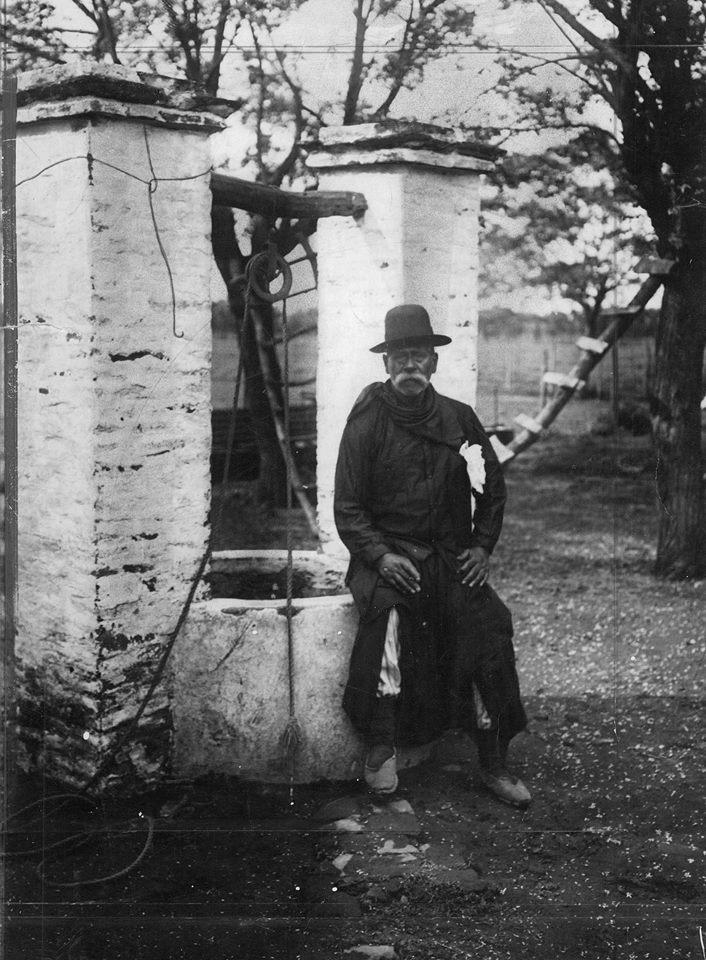|
San Antonio De Areco
San Antonio de Areco is a city in northern Buenos Aires Province, Argentina, and administrative seat of the partido of San Antonio de Areco. It is located on the Areco River away from Buenos Aires city, the country's capital. San Antonio de Areco was founded in 1730, under the protection of a chapel inaugurated by José Ruiz de Arellano. It has been declared ''city of historic national interest'' by the Argentine Government and is recognized for being the homeland of Don Segundo Sombra, the immortal character of the novel written by Ricardo Güiraldes. The city is the home of the Museo Gauchesco Ricardo Güiraldes. Each year in November, the city holds the Día de la Tradición (''Tradition Day'') gaucho celebration. Since 2001, San Antonio de Areco is sister city of Laredo, Texas in the United States. Geographical features Population: the city has 23,114 inhabitants (INDEC, 2010), against 17 764 inhabitants registered in the previous census (INDEC, 2001). San Antonio de ... [...More Info...] [...Related Items...] OR: [Wikipedia] [Google] [Baidu] |
Argentina
Argentina (), officially the Argentine Republic ( es, link=no, República Argentina), is a country in the southern half of South America. Argentina covers an area of , making it the List of South American countries by area, second-largest country in South America after Brazil, the fourth-largest country in the Americas, and the List of countries and dependencies by area, eighth-largest country in the world. It shares the bulk of the Southern Cone with Chile to the west, and is also bordered by Bolivia and Paraguay to the north, Brazil to the northeast, Uruguay and the South Atlantic Ocean to the east, and the Drake Passage to the south. Argentina is a Federation, federal state subdivided into twenty-three Provinces of Argentina, provinces, and one autonomous city, which is the federal capital and List of cities in Argentina by population, largest city of the nation, Buenos Aires. The provinces and the capital have their own constitutions, but exist under a Federalism, federa ... [...More Info...] [...Related Items...] OR: [Wikipedia] [Google] [Baidu] |
José Ruiz De Arellano
José is a predominantly Spanish and Portuguese form of the given name Joseph. While spelled alike, this name is pronounced differently in each language: Spanish ; Portuguese (or ). In French, the name ''José'', pronounced , is an old vernacular form of Joseph, which is also in current usage as a given name. José is also commonly used as part of masculine name composites, such as José Manuel, José Maria or Antonio José, and also in female name composites like Maria José or Marie-José. The feminine written form is ''Josée'' as in French. In Netherlandic Dutch, however, ''José'' is a feminine given name and is pronounced ; it may occur as part of name composites like Marie-José or as a feminine first name in its own right; it can also be short for the name ''Josina'' and even a Dutch hypocorism of the name ''Johanna''. In England, Jose is originally a Romano-Celtic surname, and people with this family name can usually be found in, or traced to, the English county of C ... [...More Info...] [...Related Items...] OR: [Wikipedia] [Google] [Baidu] |
Plaza Ruiz De Arellano, San Antonio De Areco, Buenos Aires
A town square (or square, plaza, public square, city square, urban square, or ''piazza'') is an open public space, commonly found in the heart of a traditional town but not necessarily a true geometric square, used for community gatherings. Related concepts are the civic center, the market square and the village green. Most squares are hardscapes suitable for open markets, concerts, political rallies, and other events that require firm ground. Being centrally located, town squares are usually surrounded by small shops such as bakeries, meat markets, cheese stores, and clothing stores. At their center is often a well, monument, statue or other feature. Those with fountains are sometimes called fountain squares. By country Australia The city centre of Adelaide and the adjacent suburb of North Adelaide, in South Australia, were planned by Colonel William Light in 1837. The city streets were laid out in a grid plan, with the city centre including a central public square, Vict ... [...More Info...] [...Related Items...] OR: [Wikipedia] [Google] [Baidu] |
Juan José Güiraldes
Air Commodore Juan Jose Guiraldes (January 17, 1917 – September 18, 2003) was an Argentine writer, pilot, news reporter, thinker and airline company president. He was, for a short period during the 1950's, the president of Argentina's flag airline carrier, Aerolíneas Argentinas. Biography Güiraldes was the grandson of Manuel Güiraldes, who was once mayor of Buenos Aires, and of Dolores Goñi, and the son of José Antonio Güiraldes Goñi and Elsa Videla Dorma Duportal. He was born in Buenos Aires but is mostly connected by historians to the San Antonio de Areco area. His uncle was the famed writer, Ricardo Güiraldes. In 1936, Güiraldes graduated from Argentina's military college at age 19. At the age of 22, in 1939, he was one of the founding members of Argentine airline company, Lineas Aereas Del Estado (LADE). Gŭiraldes later graduated from one of the Royal Air Force colleges in Great Britain. Gūiraldes married Ernestina Holmberg Lanusse. Gūiraldes was also the pr ... [...More Info...] [...Related Items...] OR: [Wikipedia] [Google] [Baidu] |
Humid Subtropical Climate
A humid subtropical climate is a zone of climate characterized by hot and humid summers, and cool to mild winters. These climates normally lie on the southeast side of all continents (except Antarctica), generally between latitudes 25° and 40° and are located poleward from adjacent tropical climates. It is also known as warm temperate climate in some climate classifications. Under the Köppen climate classification, ''Cfa'' and ''Cwa'' climates are either described as humid subtropical climates or warm temperate climates. This climate features mean temperature in the coldest month between (or ) and and mean temperature in the warmest month or higher. However, while some climatologists have opted to describe this climate type as a "humid subtropical climate", Köppen himself never used this term. The humid subtropical climate classification was officially created under the Trewartha climate classification. In this classification, climates are termed humid subtropical when th ... [...More Info...] [...Related Items...] OR: [Wikipedia] [Google] [Baidu] |
INDEC
The National Institute of Statistics and Censuses ( es, link=no, Instituto Nacional de Estadística y Censos; INDEC) is an Argentine decentralized public body that operates within the Ministry of Economy, which exercises the direction of all official statistical activities carried out in the country. In February 2013, the International Monetary Fund censured Argentina for failing to report accurate inflation data. Political intervention in the INDEC figures ended, and the IMF declared in November 2016 that Argentine statistics were again in accordance with international standards. Definition The National Institute of Statistics and Census ( es, Instituto Nacional de Estadística y Censos, INDEC) is a public deconcentrated body, of a technical nature, within the scope of Argentina's National Ministry of Economy, and which runs all the official statistical activities carried out throughout the country. Its creation and operation are regulated bLaw 176221 executive order3110/7 ... [...More Info...] [...Related Items...] OR: [Wikipedia] [Google] [Baidu] |
Ricardo Güiraldes
Ricardo Güiraldes (13 February 1886 — 8 October 1927)Escuela Normal Superior de Chascomús was an Argentine novelist and poet, one of the most significant Argentine writers of his era, particularly known for his 1926 novel ''Don Segundo Sombra'', set amongst the gauchos. Life Güiraldes was born in Buenos Aires, the second son of a wealthy family of the old landowning aristocracy. His mother was Dolores Goñi, descendant of Ruiz de Arellano, who founded the village of San Antonio de Areco in 1730. Manuel Güiraldes, his father, later ''intendente'' (governmentally appointed mayor) of Buenos Aires, was a cultured, educated man, interested in art. Ricardo inherited that predilection; in his youth he sketched rural scenes and painted in oils. When Güiraldes was one year old, he travelled with his family to Europe, living for four years in Paris near the Rue Saint-Claude. By the age of six, he spoke not only Spanish but French and German. Indeed, French was his first language, an ... [...More Info...] [...Related Items...] OR: [Wikipedia] [Google] [Baidu] |
Don Segundo Sombra
''Don Segundo Sombra'' is a 1926 novel by Argentine rancher Ricardo Güiraldes. Like José Hernández's poem ''Martín Fierro'', its protagonist is a gaucho. However, unlike Hernandez's poem, ''Don Segundo Sombra'' does not romanticize the figure of the gaucho, but simply examines the character as a shadow (''sombra'') cast across Argentine history. Unlike the character of Martin Fierro, who is purely a fictional creation, Don Segundo Sombra was loosely based and inspired by the real life of Segundo Ramírez, a native of the town of San Antonio de Areco, in Buenos Aires Province. The novel made it to the big screen in the 1969 Argentine film of the same name, directed by Manuel Antín. Ricardo Güiraldes, who was a friend and literary partner of Jorge Luis Borges Jorge Francisco Isidoro Luis Borges Acevedo (; ; 24 August 1899 – 14 June 1986) was an Argentine short-story writer, essayist, poet and translator, as well as a key figure in Spanish-language and internat ... [...More Info...] [...Related Items...] OR: [Wikipedia] [Google] [Baidu] |
Buenos Aires
Buenos Aires ( or ; ), officially the Autonomous City of Buenos Aires ( es, link=no, Ciudad Autónoma de Buenos Aires), is the capital and primate city of Argentina. The city is located on the western shore of the Río de la Plata, on South America's southeastern coast. "Buenos Aires" can be translated as "fair winds" or "good airs", but the former was the meaning intended by the founders in the 16th century, by the use of the original name "Real de Nuestra Señora Santa María del Buen Ayre", named after the Madonna of Bonaria in Sardinia, Italy. Buenos Aires is classified as an alpha global city, according to the Globalization and World Cities Research Network (GaWC) 2020 ranking. The city of Buenos Aires is neither part of Buenos Aires Province nor the Province's capital; rather, it is an autonomous district. In 1880, after decades of political infighting, Buenos Aires was federalized and removed from Buenos Aires Province. The city limits were enlarged to include the ... [...More Info...] [...Related Items...] OR: [Wikipedia] [Google] [Baidu] |
Provinces Of Argentina
Argentina is subdivided into twenty-three federated states called provinces ( es, provincias, singular ''provincia'') and one called the autonomous city (''ciudad autónoma'') of Buenos Aires, which is the federal capital of the republic ( es, Capital Federal, links=no) as decided by the Argentine Congress. The provinces and the capital have their own constitutions, and exist under a federal system. History During the War of Independence the main cities and their surrounding countrysides became provinces though the intervention of their ''cabildos''. The Anarchy of the Year XX completed this process, shaping the original thirteen provinces. Jujuy seceded from Salta in 1834, and the thirteen provinces became fourteen. After seceding for a decade, Buenos Aires Province accepted the 1853 Constitution of Argentina in 1861, and its capital city was made a federal territory in 1880. A law from 1862 designated as national territories those under federal control but outside ... [...More Info...] [...Related Items...] OR: [Wikipedia] [Google] [Baidu] |





